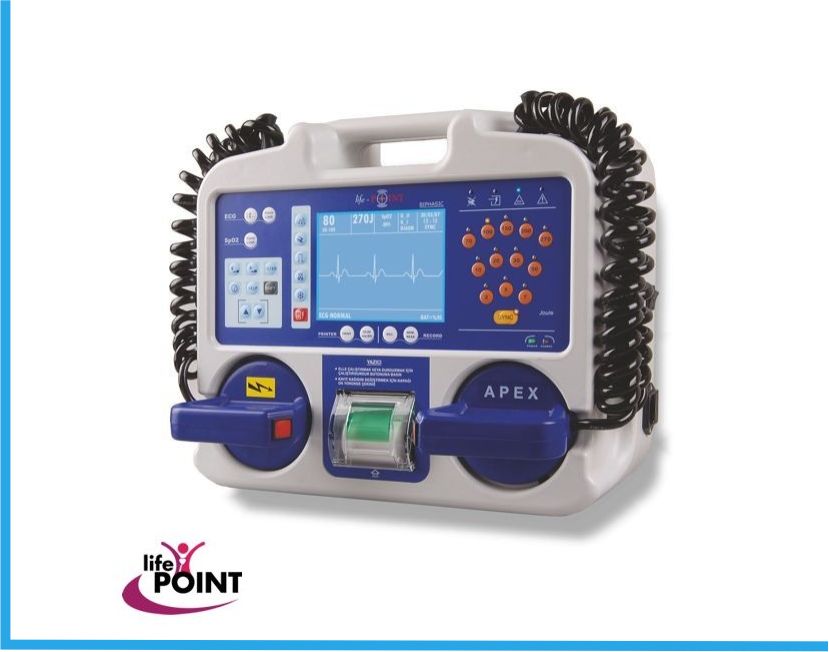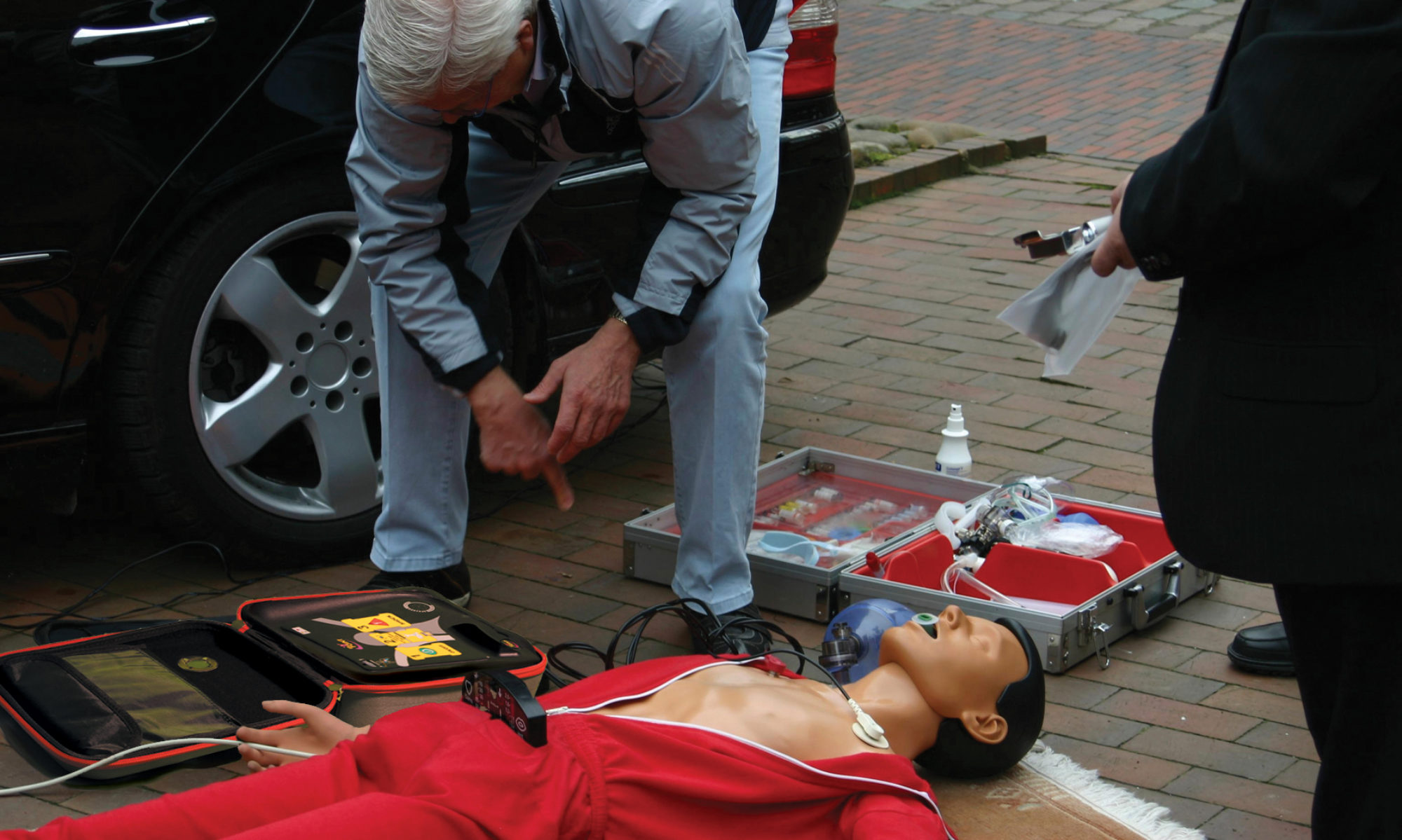
External Defibrillator
Life-Point Pro Biphasic External Defibrillator is a device used to perform defibrillation for the purpose of turning abnormal ECG rhythm into normal rhythm. When heart enters into ventricular fibrillation, the process of returning it to its normal sinus rhythm by giving proper amount of external electric current is called defibrillation, and device used in giving such electric current is called defibrillator. Should electrical energy is given in the form of shocks, it creates stimulation namely, myocardium is depolarized and systole occurs. To give shock to heart by means of defibrillator, heart should be in ventricular fibrillation or ventricular tachycardia rhythm without pulse.
A external defibrillator is an electrical device that provides a shock to the heart when there is a life-threatening arrhythmia present. The arrhythmia that we worry about is called ventricular fibrillation. This is a very rapid erratic beating of the heart. Multiple parts of pacemakers in the heart starts sort of beating erratically and the heart can’t rhythmically contract. And what the defibrillator does, it provides shock that basically shocks the heart to stop so that it can start rhythmically contracting again.
Defibrillation is a procedure used to treat life threatening conditions that affect the rhythm of the heart such as cardiac arrhythmia, ventricular fibrillation and pulseless ventricular tachycardia.
The procedure involves the delivery of an electric shock to the heart which causes depolarisation of the heart muscles and re-establishes normal conduction of the heart’s electrical impulse. The machine used to deliver this therapeutic shock to the heart is called a defibrillator.
